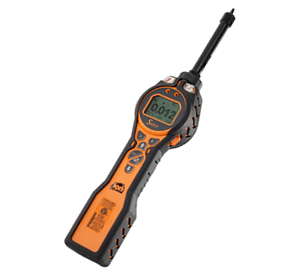- Home
- Products
- Gas Detection
- Ion Science
- Benzene Monitors
- Tiger Select for benzene and total aromatic compound detection
Tiger Select for benzene and total aromatic compound detection
- General Details
- Features
- Specifications
- Typical Applications
- Documents
Tiger Select – Benzene & Total Aromatic Compound (TAC) detection in one instrument
The Tiger Select is revolutionary hand-held gas detector with two mode operation for the rapid detection of benzene and Total Aromatic Compounds (TACs) providing accurate, reliable data you can count on.
Utilising the high output Ion Science 10.0eV detection system, a reading for Total Aromatic Compounds (TACs) is seen immediately on start-up. Should aromatics be detected, a Draeger benzene pre-filter tube can be easily attached to ensure rapid detection and selective measurement of benzene.
Throughout the measurement process, Tiger Select continues to display real time data, ensuring the final reading represents the full value of actual benzene present. Benzene concentrations are displayed down to ppb levels, giving you the most accurate, reliable data you can count on.
Tiger Select is capable of providing 15 minute STELs and 8 hour TWAs for TACs. A 10.6 eV lamp can easily be installed for the detection of a wide range of TVOCs.
In addition, the unique MiniPID VOC sensor incorporates both Anti-contamination technology and Fence Electrode technology for extended operation in difficult working environments.
The Tiger Select benzene and total aromatic compound detector can also be used in standard Tiger operational mode without the use of a benzene pre-filter tube to deliver active indications of VOCs, including benzene at concentrations as low as 1 ppb benzene equivalent. For more information see the Tiger Brochure or webpages.
Key Benefits
- Immediate results on start up – no need to wait for readings
- Fast to detect Total Aromatic Compounds (TACs)
- Detects benzene in other compounds with selective Draeger Benzene pre-filter tube
- Also detects benzene without the need for a specific tube in areas of benzene gas only
- Detects down to ppb levels
- Continuous readings shown on display until max level is reached
- Independently verified as best performing PID technology
Key Features
- Exceptionally easy-to-use and intuitive software
- Large, clear backlit display and keypad
- Easy to operate even when wearing thick gloves
- Lightweight enabling easy one-handed operation
Versatility
- Rugged design to withstand the harshest environments
- Backlight responds to ambient light conditions
- Battery life up to 24 hours
Resolution
10 ppb or 0.033 mg/m3 benzene
Maximum Reading
40 ppm or 130 mg/m3 benzene in tube mode
0 – 20,000 ppm in TAC mode (gas dependant)
Accuracy
±10% display reading ± one digit benzene
Linearity
± 5% to 40 ppm benzene
Response Time
120 seconds. Progressive indication of benzene breakthrough is displayed in real time
Intrinsically Safe Approvals
ATEX II 1G Ex ia IIC T4 Ga (- 15 0C ≤Ta ≤+45 0C), IECEx and CUL
US and Canadian approved
Battery Life
Li-ion: life up to 24 hours, charge time 6.5 hours
Alkaline: 3 x AA, up to 8.5 hours life
PID Lamps
Kr PID lamp with 10.0 eV filter pellet
Data Logging
> 120,000 data log points including date and time stamp
Communication
Direct USB 1.1
Calibration
2 and 3 point calibration (Via calibration kit accessory?
Alarm
Flashing LED’s Amber (low alarm) Red (high alarm)
Sounder 95 dBA at 300mm (12”) Vibration on alarm
Pre-programmed TWA and STEL*
Flow Rate
220 ml/min (150 cc/min flow alarm)
Temperature
Operating: -20 to 60 0C, -4 to 140 0F (non Intrinsically Safe)
Humidity: 0-99% RH (non condensing)
Protection
Designed to IP65 (heavy rain)
1180
EMC tested to EN61326-1:2006, EN50270:2006 & CFR 47:2008 Class A
Weight & Dimensions
Instrument (probe fitted, no tube attached)
Length: 465 x Height: 89 x Depth: 61 mm (18.3 x 3.5 x 2.4”)
Standard case
Packed weight: 5 kg (176 oz)
- Total Aromatic Compounds (TAC) detection at loading docks and barge operations
- Confined space entry pre-screening during refinery and plant maintenance screening during refinery and plant maintenance
- Refinery down-stream monitoring
- Hazardous material response
- Marine spill response

